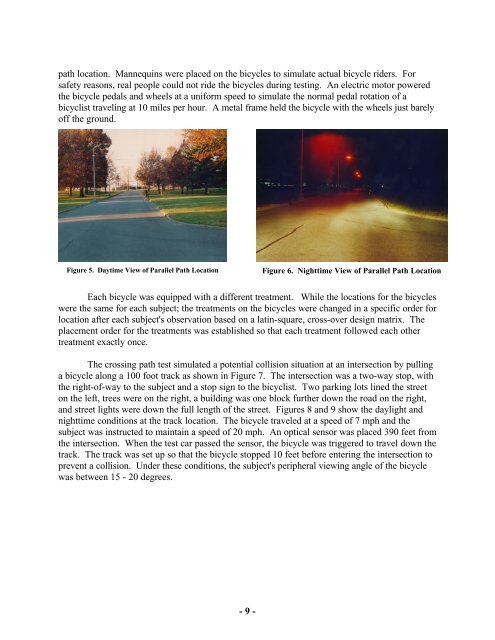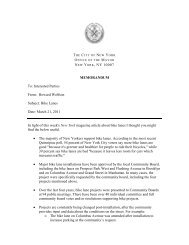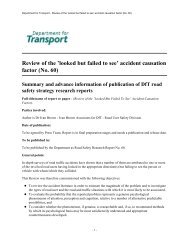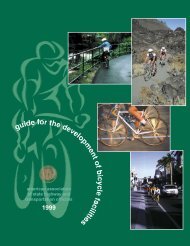Bicycle Reflector Project - Consumer Product Safety Commission
Bicycle Reflector Project - Consumer Product Safety Commission
Bicycle Reflector Project - Consumer Product Safety Commission
Create successful ePaper yourself
Turn your PDF publications into a flip-book with our unique Google optimized e-Paper software.
path location. Mannequins were placed on the bicycles to simulate actual bicycle riders. For<br />
safety reasons, real people could not ride the bicycles during testing. An electric motor powered<br />
the bicycle pedals and wheels at a uniform speed to simulate the normal pedal rotation of a<br />
bicyclist traveling at 10 miles per hour. A metal frame held the bicycle with the wheels just barely<br />
off the ground.<br />
Figure 5. Daytime View of Parallel Path Location<br />
Figure 6. Nighttime View of Parallel Path Location<br />
Each bicycle was equipped with a different treatment. While the locations for the bicycles<br />
were the same for each subject; the treatments on the bicycles were changed in a specific order for<br />
location after each subject's observation based on a latin-square, cross-over design matrix. The<br />
placement order for the treatments was established so that each treatment followed each other<br />
treatment exactly once.<br />
The crossing path test simulated a potential collision situation at an intersection by pulling<br />
a bicycle along a 100 foot track as shown in Figure 7. The intersection was a two-way stop, with<br />
the right-of-way to the subject and a stop sign to the bicyclist. Two parking lots lined the street<br />
on the left, trees were on the right, a building was one block further down the road on the right,<br />
and street lights were down the full length of the street. Figures 8 and 9 show the daylight and<br />
nighttime conditions at the track location. The bicycle traveled at a speed of 7 mph and the<br />
subject was instructed to maintain a speed of 20 mph. An optical sensor was placed 390 feet from<br />
the intersection. When the test car passed the sensor, the bicycle was triggered to travel down the<br />
track. The track was set up so that the bicycle stopped 10 feet before entering the intersection to<br />
prevent a collision. Under these conditions, the subject's peripheral viewing angle of the bicycle<br />
was between 15 - 20 degrees.<br />
- 9 -





